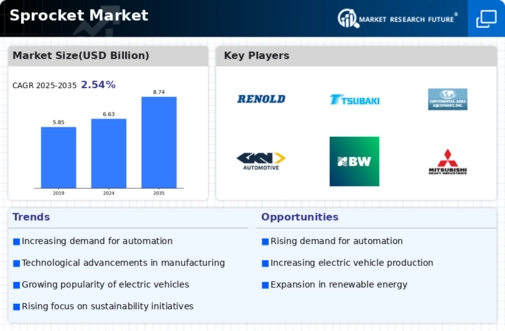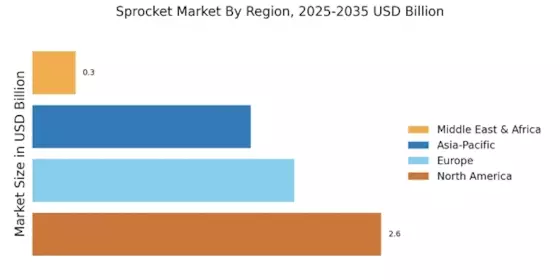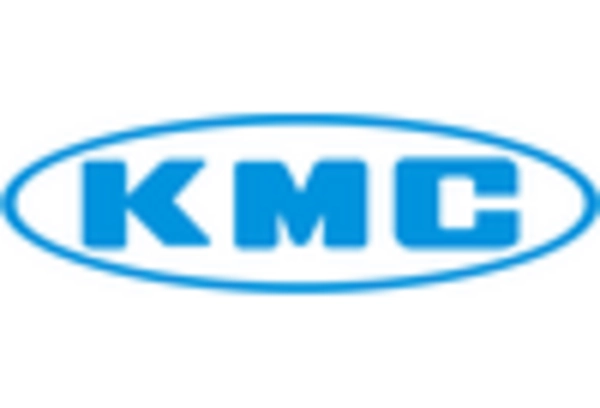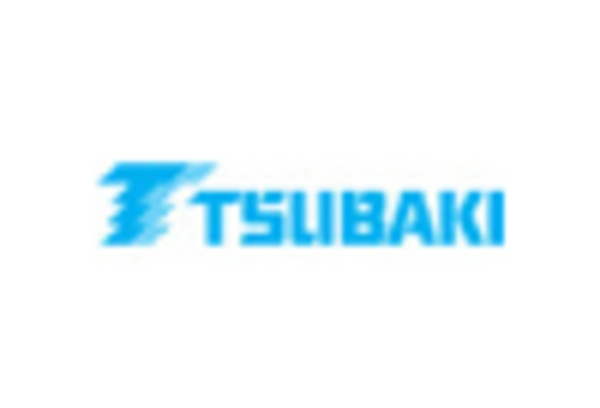Expansion of Industrial Machinery
The Sprocket Market is significantly influenced by the expansion of industrial machinery across various sectors. Industries such as manufacturing, construction, and agriculture are increasingly adopting advanced machinery that relies on sprockets for efficient operation. In 2025, the industrial machinery segment is expected to represent around 25% of the overall sprocket market. This growth is attributed to the rising need for automation and improved productivity in industrial processes. As companies invest in modernizing their equipment, the demand for high-performance sprockets is likely to increase. Additionally, the trend towards smart manufacturing may further drive innovation in sprocket design and functionality, thereby enhancing the Sprocket Market's prospects. This expansion reflects a broader trend of mechanization that is reshaping various industries.
Growth in Renewable Energy Sector
The Sprocket Market is poised to benefit from the burgeoning renewable energy sector, particularly in wind and solar energy applications. As the world shifts towards sustainable energy solutions, the demand for specialized sprockets used in wind turbines and solar tracking systems is expected to rise. In 2025, the renewable energy sector is projected to contribute approximately 15% to the overall sprocket demand. This growth is driven by the increasing investments in renewable energy infrastructure and the need for reliable components that can withstand harsh environmental conditions. The Sprocket Market is likely to see innovations in materials and designs to cater to the specific requirements of renewable energy applications. This trend not only supports sustainability goals but also enhances the market potential for sprockets in the energy sector.
Increasing Focus on Customization
The Sprocket Market is increasingly characterized by a focus on customization and tailored solutions. As industries demand specific sprocket designs to meet unique operational requirements, manufacturers are adapting their offerings to provide customized products. This trend is particularly evident in sectors such as aerospace and robotics, where precision and performance are paramount. In 2025, the customization segment is expected to account for approximately 20% of the total sprocket market. This shift towards personalized solutions not only enhances customer satisfaction but also drives innovation in sprocket design and manufacturing processes. As companies strive to differentiate themselves in a competitive landscape, the ability to offer customized sprockets may become a key competitive advantage within the Sprocket Market.
Rising Demand in Automotive Sector
The Sprocket Market is experiencing a notable surge in demand, particularly from the automotive sector. As vehicle production ramps up, the need for high-quality sprockets, which are essential components in various automotive applications, becomes increasingly critical. In 2025, the automotive industry is projected to account for approximately 30% of the total sprocket demand, driven by the growing trend of electric vehicles and advanced automotive technologies. This shift necessitates the use of durable and efficient sprockets, thereby propelling the Sprocket Market forward. Furthermore, the integration of automation in manufacturing processes is likely to enhance the production of sprockets, ensuring they meet the evolving standards of the automotive sector. Consequently, this driver indicates a robust growth trajectory for the Sprocket Market in the coming years.
Technological Innovations in Manufacturing
Technological innovations in manufacturing processes are significantly impacting the Sprocket Market. The adoption of advanced manufacturing techniques, such as 3D printing and precision machining, is enabling the production of high-quality sprockets with enhanced performance characteristics. In 2025, it is anticipated that these innovations will lead to a reduction in production costs and improved product quality, thereby attracting more players to the Sprocket Market. Furthermore, the integration of Industry 4.0 principles, including automation and data analytics, is likely to streamline production processes and enhance supply chain efficiency. As manufacturers embrace these technologies, the Sprocket Market may witness a transformation in how sprockets are designed, produced, and distributed, ultimately fostering growth and competitiveness.


















Leave a Comment